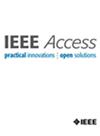mHealth Case Study Presenting Design SynMeth, a Rapid Prototyping MBSE Methodology, by Advancing Specific OPM-to-SysML Mapping
IF 3.4
3区 计算机科学
Q2 COMPUTER SCIENCE, INFORMATION SYSTEMS
引用次数: 0
Abstract
Designing IoT-based cognitive assessment and monitoring devices for older adults poses critical challenges in managing trade-offs between accessibility and functionality. With the global aging population to exceed 2 billion by 2050, an increasing number of older adults will require Active Assisted Living (AAL) technologies to support independent living. Cognitive impairments make standard interfaces difficult to use, necessitating user-centered design approaches. Effective solutions must address the transition from document-centric to model-based design, incorporating co-design with users and caregivers, iterative modeling cycles, and continuous model evolution. This study highlights key factors that call for a hybrid approach, blending the flexibility of rapid prototyping with the accuracy and robustness of precision engineering. This study demonstrates a successful implementation of a cognitive detection device within an AAL European project by presenting Design SynMeth, a novel blended Model-Based Systems Engineering methodology that maps Object-Process Methodology (OPM) to Systems Modeling Language (SysML) using a modified MagicGrid framework. This approach bridges early and late design phases, integrating OPM’s strength in conceptual modeling and SysML’s rigor in technical specifications. Design SynMeth enhances system design efficiency and adaptability to IoT challenges. The case study reveals how Design SynMeth methodology models the architecture of a mobile health well-being device for detecting cognitive issues, supporting seniors’ autonomy. It highlights the dynamic interplay between problem and solution domains, leveraging OPM diagrams for problem domain and SysML diagrams for requirements and solution domain. This work advances the state of the art in IoT-based cognitive monitoring and promotes innovative, human-centered engineering for aging societies.求助全文
约1分钟内获得全文
求助全文
来源期刊

IEEE Access
COMPUTER SCIENCE, INFORMATION SYSTEMSENGIN-ENGINEERING, ELECTRICAL & ELECTRONIC
CiteScore
9.80
自引率
7.70%
发文量
6673
审稿时长
6 weeks
期刊介绍:
IEEE Access® is a multidisciplinary, open access (OA), applications-oriented, all-electronic archival journal that continuously presents the results of original research or development across all of IEEE''s fields of interest.
IEEE Access will publish articles that are of high interest to readers, original, technically correct, and clearly presented. Supported by author publication charges (APC), its hallmarks are a rapid peer review and publication process with open access to all readers. Unlike IEEE''s traditional Transactions or Journals, reviews are "binary", in that reviewers will either Accept or Reject an article in the form it is submitted in order to achieve rapid turnaround. Especially encouraged are submissions on:
Multidisciplinary topics, or applications-oriented articles and negative results that do not fit within the scope of IEEE''s traditional journals.
Practical articles discussing new experiments or measurement techniques, interesting solutions to engineering.
Development of new or improved fabrication or manufacturing techniques.
Reviews or survey articles of new or evolving fields oriented to assist others in understanding the new area.
 求助内容:
求助内容: 应助结果提醒方式:
应助结果提醒方式:


